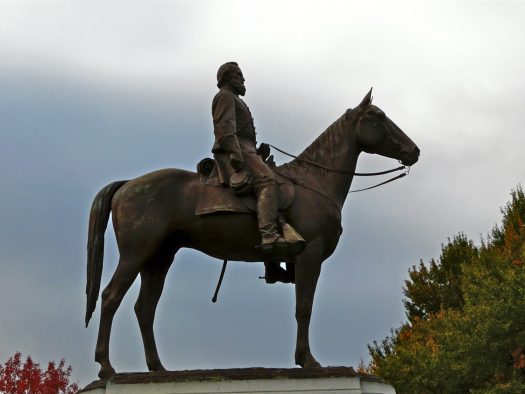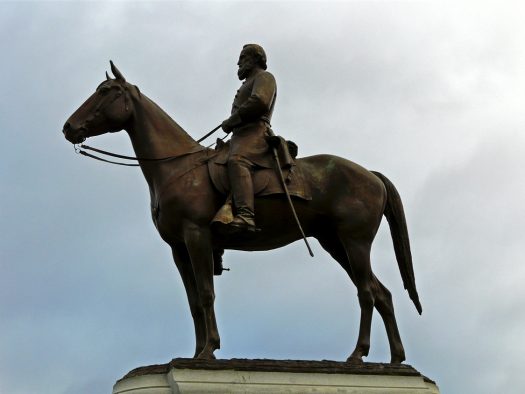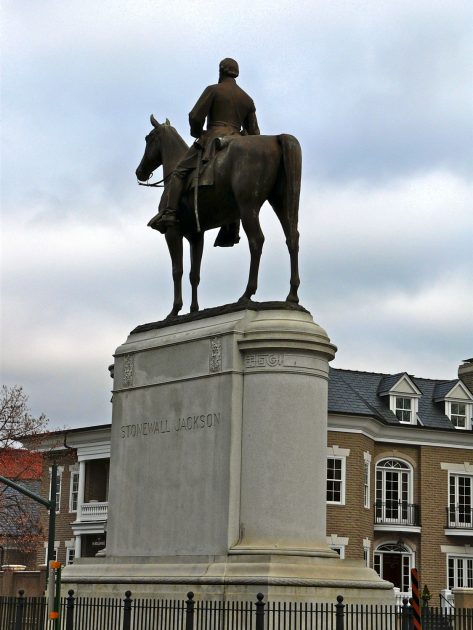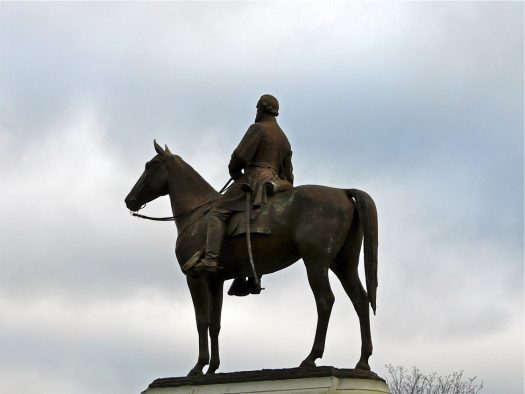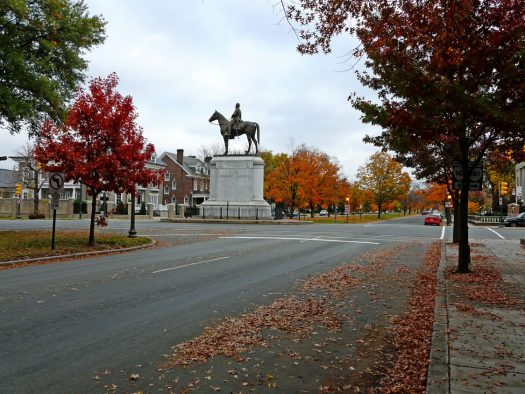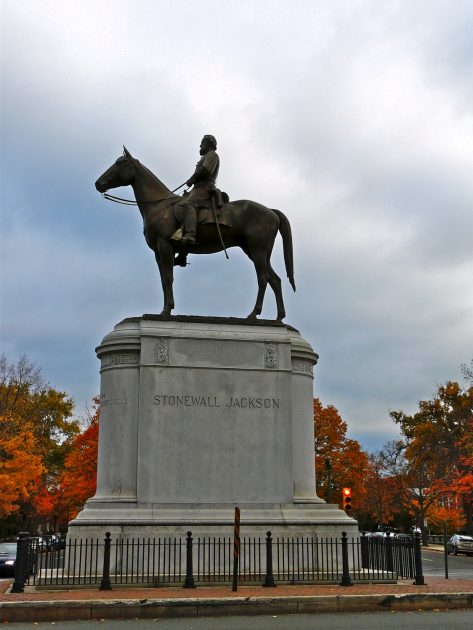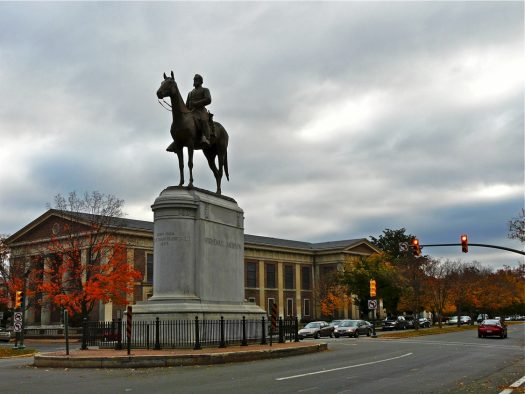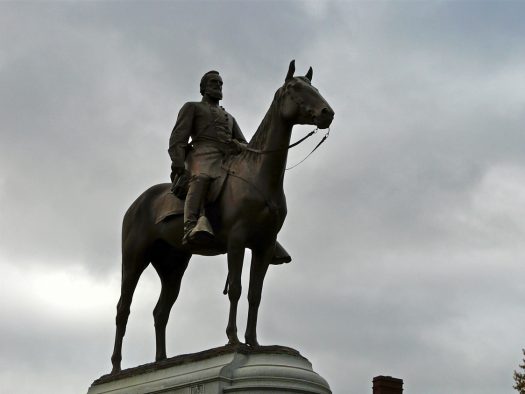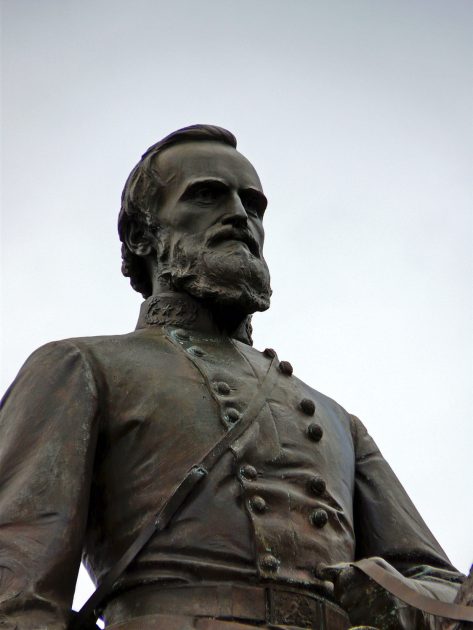- CountryUS
- Town:VA Richmond
-
Year of creation:1919
- Rider(s):Jackson, Thomas Jonathan
(1824–1863) was one of the best-known Confederate commanders. Shot at the Battle of Chancellorsville in 1863, Jackson survived the loss of one arm from amputation, but died of complications from pneumonia eight days later. His death was a severe setback for the Confederacy, affecting not only its military prospects, but also the morale of its army and the general public.
Jackson became an icon of Southern heroism and commitment, joining Lee in the pantheon of the ‘Lost Cause’. He excelled in many battles but had a poor reputation as a horseman. One of his soldiers, Georgia volunteer William Andrews, wrote that Jackson was:
… a very ordinary looking man of medium size, his uniform badly soiled as though it had seen hard service. He wore a cap pulled down nearly to his nose and was riding a raw-boned horse that did not look much like a charger, unless it would be on hay or clover. He certainly made a poor figure on a horseback, with his stirrup leather six inches too short, putting his knees nearly level with his horse’s back, and his heels turned out with his toes sticking behind his horse’s fore shoulder. A sorry description of our most famous general, but a correct one. Jackson rode his horse, named Little Sorrel, throughout the war. Little Sorrel died at the age of 36 and is buried on the parade ground of the Virginia Military Institute, near a statue of Jackson. - Sculptor(s):Sievers, Frederick William
(1872–1966) was an American sculptor. He moved to Richmond, Virginia, as a young man, furthering his art studies by attending the Royal Academy of Fine Arts in Rome and the Académie Julian in Paris. In 1910 when Sievers was commissioned to create the Virginia Monument at Gettysburg, Pennsylvania, he opened a studio in Richmond.
